
China


Akin

AllBright Law Offices

AllBright Law Offices

Allen & Gledhill (Shanghai Representative Office)
An, Tian, Zhang & Partners

AnJie Broad Law Firm

Anli Partners

Appleby

Ashurst
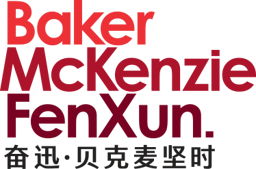
Baker McKenzie FenXun
Beijing Docvit Law Firm

Beijing Grandway Law Offices

Bird & Bird

CCPIT Patent & Trademark Law Office

CCPIT Patent and Trademark Law Office
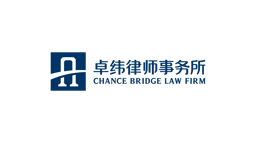
Chance Bridge Law Firm

Chang Tsi & Partners

China Patent Agent (H.K.) Ltd.

Cleary Gottlieb Steen & Hamilton

Clifford Chance

CMS

Commerce & Finance Law Offices

Curtis, Mallet-Prevost, Colt & Mosle LLP

Dacheng
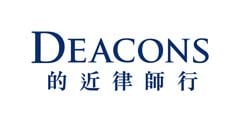
Deacons
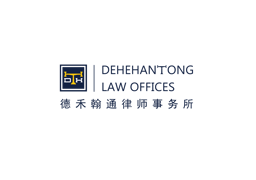
Dehehantong Law Offices
RGB显示-01.jpg)
DeHeng Law Offices
RGB显示-01.jpg)
DeHeng Law Offices (Shenzhen)
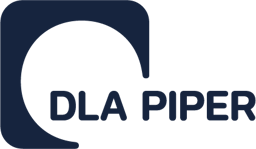
DLA Piper

Dorsey & Whitney LLP

Duane Morris & Selvam LLP
East & Concord Partners
ETR Law Firm

Fangda Partners

FenXun Partners
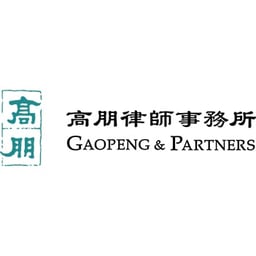
Gaopeng & Co

Gaopeng & Partners
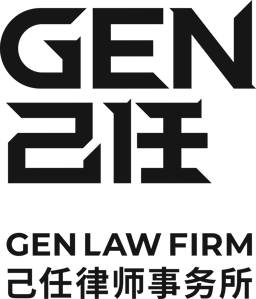
GEN Law Firm

Gide Loyrette Nouel A.A.R.P.I.
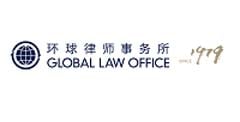
Global Law Office

Goodwin

Grandall Law Firm

Greenberg Traurig
Guangsheng & Partners PRC Lawyers
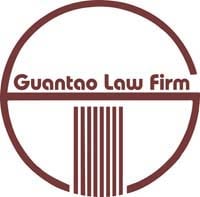
Guantao Law Firm
Hai Run Law Firm
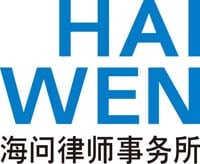
Haiwen & Partners
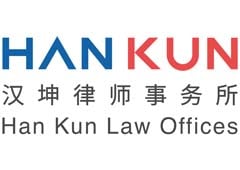
Han Kun Law Offices
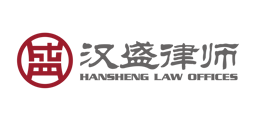
Hansheng Law Offices

Harvesting Law Firm

HFG

HFG Law Firm & IP Practice

HHP Attorneys-At-Law

Hogan Lovells International LLP
Hong Fang Law
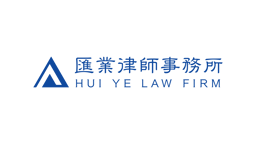
Hui Ye Law Firm

Hylands Law Firm
Jia Yuan Law Offices
JianLingChengDa Law Firm

Jincheng Tongda & Neal
Jingtian & Gongcheng
Jingtian & Gongcheng DELETE

Johnson Stokes & Master
Joint-Win Partners
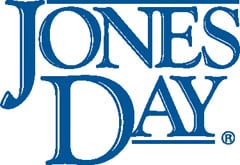
Jones Day

JunHe

JunHe LLP

JunZeJun Law Offices

K&L Gates
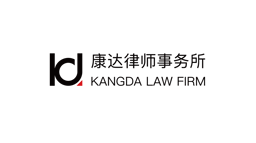
Kangda Law Firm

Kangxin Partners, p.c.

Katten

King & Capital Law Firm

King & Wood Mallesons

Kirkland & Ellis International LLP

Latham & Watkins LLP
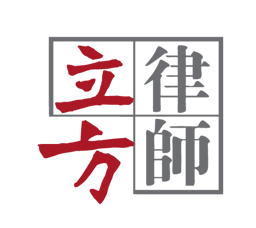
Lifang & Partners

Linklaters

Liu, Shen & Associates
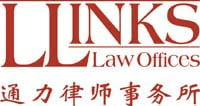
Llinks Law Offices
Long An Law Firm
Longan Law firm

Mayer Brown

Merits & Tree Law Offices

Morgan Lewis & Bockius LLP

Morgan, Lewis & Bockius LLP

Mori Hamada & Matsumoto Beijing Office

Mori Hamada & Matsumoto Shanghai Office

Mori Hamada Intellectual Property (Beijing) Co., Ltd.

Morrison Foerster

Nagashima Ohno & Tsunematsu Shanghai Representative Office
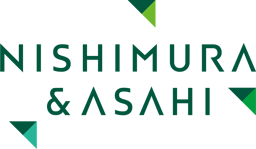
Nishimura & Asahi

Norton Rose Fulbright

Ogier

Orrick, Herrington & Sutcliffe LLP

Osborne Clarke
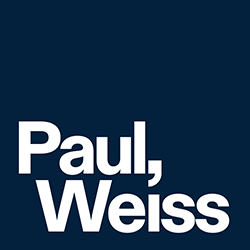
Paul, Weiss, Rifkind, Wharton & Garrison LLP
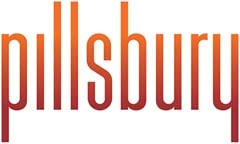
Pillsbury Winthrop Shaw Pittman LLP

Proskauer Rose LLP

PW & Partners

Quinn Emanuel Urquhart & Sullivan, LLP

RAJAH & TANN SINGAPORE LLP Shanghai Representative Office

RAJAH & TANN SINGAPORE LLP Shenzhen Representative Office

Ropes & Gray LLP

Shanghai Pacific Legal
Shihui Partners

Sidley Austin LLP

Simmons & Simmons

Simpson Thacher & Bartlett LLP
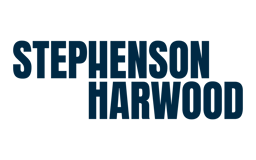
Stephenson Harwood

Steptoe LLP
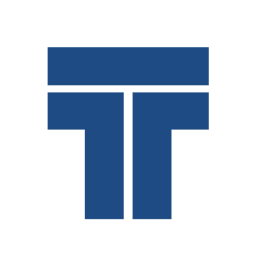
T&C Law Firm
Tahota Law Firm

Tian Yuan Law Firm

Tiantai Law Firm

TianTong Law Firm

Tiger Partners

Topcom China Law Offices
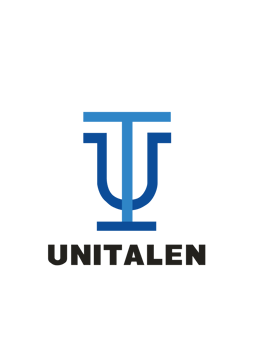
Unitalen Attorneys at Law

V&T Law Firm

VT Law Firm
W&H Law Firm

Wang Jing & Co

Wanhuida Intellectual Property
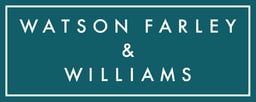
Watson Farley & Williams
Wei Tu Law Firm

Weil, Gotshal & Manges LLP

White & Case

White & Case LLP

Wikborg Rein

Winston & Strawn LLP

Wintell & Co Law Firm

Yingke Law Firm

Yingke Law Firm DELETE
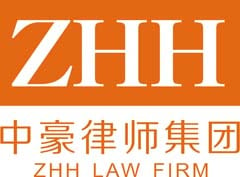
ZHH & Robin LLP

Zhong Lun Law Firm
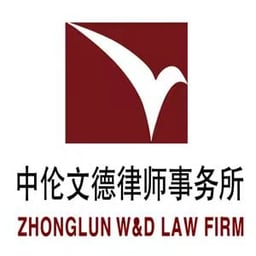
Zhong Lun W&D Law Firm
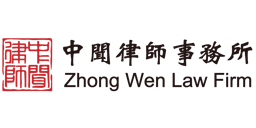
Zhong Wen Law Firm

Zhong Yin Law Firm

Zhonglun W&D Law Firm
Firms in the Spotlight
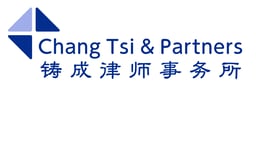
Chang Tsi & Partners
Chang Tsi & Partners is a "National Outstanding Law Firm" (nominated by the Ministry of Justice of China) with a strong reputation in intellectual property and litigation.
Since its

Kangxin Partners, p.c.
Since its establishment in 1994, Kangxin has grown into a leader amongst IP law firms in China, with offices in Beijing, Tianjin, Qingdao, Xi’an, Wuhan, Hangzhou and Guangzhou. Our client base include

CCPIT Patent and Trademark Law Office
CCPIT Patent and Trademark Law Office is the oldest and one of the largest full-service intellectual property law firms in China. The firm has 322 patent and trademark attorneys, with 100 qualified at
Interviews
View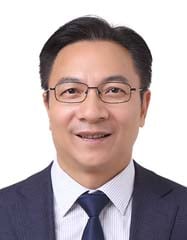
Jigao Zhou, Managing Partner
JianLingChengDa Law Firm
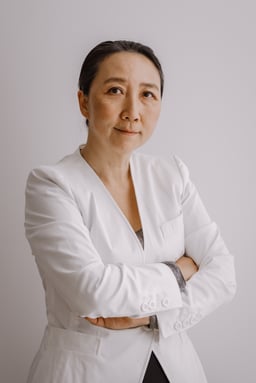
Spring Chang, Managing Partner
Chang Tsi & Partners
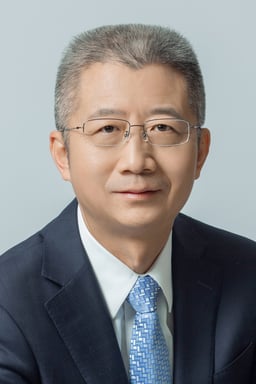
Chuanhong Long, President
CCPIT Patent and Trademark Law Office

Zhang Liguo, Chief Partner
Beijing Grandway Law Offices

Spring Chang, Founding Partner
Chang Tsi & Partners
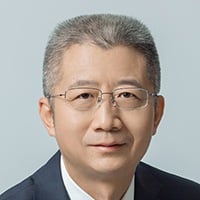
Chuanhong Long, President, CCPIT Patent and Trademark Law Office
CCPIT Patent and Trademark Law Office

Liguo Cui, Managing Partner
Guantao Law Firm
News & Developments
ViewPress Releases
DLA Piper advises Artistic Milliners in Cone Denim majority stake acquisition
DLA Piper advised Artistic Milliners, a global denim manufacturer, in its acquisition of a majority stake in denim supplier Cone Denim from textile supplier Elevate Textiles. Cone Denim will continue to operate as a standalone portfolio company under Artistic Milliners.
The new entity will seek to operate a global platform spanning both hemispheres and will be comprised of a combination of selected assets from each organization. Cone Denim will also now operate mills in Mexico, China, and the US.
“We were excited to work with Artistic Milliners on this strategic matter, showcasing the breadth of our cross-border experience,” said deal lead Michael J. McGuinness, US-LatAm Practice Group Regional Co-Leader, Corporate M&A and Private Equity. “It’s not just the firm’s global reach, but it's cohesive service, that helps clients navigate complex deals with clarity.”
"Working with DLA Piper has provided us with a comprehensive global perspective,” said Murtaza Ahmed, CEO of Artistic Milliners. “The firm's ability to integrate insights across multiple jurisdictions exemplifies the level of collaboration we seek as we expand our international operations.”
In addition to McGuinness (New York), Of Counsel Violeta Libergott (US/Brazil) co-led DLA Piper’s cross-border and multi-practice team across the US, United Arab Emirates (UAE), China, and Mexico. The team also consisted of Partners Nick Klein, Elyssa Kutner, Brian Janovitz, Larissa Bifano, Amadeu Ribeiro (all US), Therese Abou-Zeid (UAE), Jorge Benejam (Mexico); Partner Tina Xia and Senior Legal and Tax Manager Peter Chen (both China); Head of Sovereign and LP Investment, MENA, Kurt Alfrey (UAE); Of Counsel Andy Eklund (US); Associates Regina Esparza (Mexico), Regine Lewis, and Michael Haggerson, and Syeda Kamal (all US).
With more than 1,000 corporate lawyers globally, DLA Piper helps clients execute complex transactions seamlessly while supporting clients across all stages of development. The firm has been rated number one in global M&A volume for 15 consecutive years, according to Mergermarket, and ranked as number one in VC, PE and M&A in combined global deal volume according to PitchBook.
DLA Piper - October 17 2025
Intellectual property: PRC firms
Outline of Patent Applications for AI-related Inventions in China
Outline of Patent Applications for AI-related Inventions in China
In recent years, innovations of artificial intelligence (hereinafter referred to as AI) technologies have continuously achieved new breakthroughs, becoming a significant driving force in the new round of technological revolution and industrial transformation. The number of AI-related patent applications has grown rapidly. In response to this, at the end of 2024, the National Intellectual Property Administration of China (CNIPA) released the "Guidelines for Patent Applications for AI-related Inventions (Trial)" (hereinafter referred to as the "Guidelines"). These guidelines provide a comprehensive and in-depth interpretation of the patent examination policy in the field of AI under the framework of China's current patent legal system, addressing the hot legal issues commonly concerned by innovation entities. Below is an introduction to the main content of the Guidelines:
Common Types of AI-Related Patent Applications
The solutions for patent applications for AI-related inventions (hereinafter referred to as AI applications) typically involve AI algorithms or models, as well as the functions or field applications of these algorithms or models. Furthermore, with the continuous breakthroughs in AI technology, patent applications relating to AI-assisted or AI-generated inventions have become new hotspots. AI applications are mainly classified into the following types:
Type 1: Patent Applications Relating to AI Algorithms or Models per se
This type of patent applications usually involves AI algorithms or models per se and their improvements or optimizations, such as model structure, model compression, or model training.
Type 2: Patent Applications Relating to Functions or Field Applications based on AI Algorithms or Models
This type of patent applications integrates AI algorithms or models into inventions as an integral part of the solutions for products, methods, or their improvements. In other words, one or more AI algorithms or models are used to implement functions or apply AI to various scenarios, for example, a new type of electron microscope based on AI image sharpening technology, or the application of AI in transportation, telecommunications, or other fields.
Type 3: Patent Applications Relating to AI-assisted Inventions
AI-assisted inventions refer to invention-creations made with AI technology as an auxiliary tool during the inventing process, wherein AI functions similarly to an information processor or drawing tool, for example, a new drug compound obtained by utilizing AI to identify specific protein binding sites.
Type 4: Patent Applications Relating to AI-generated Inventions
AI-generated inventions refer to invention-creations autonomously generated by AI without substantial human contribution, for example, a food container autonomously designed by AI technology.
[Note: According to the "FAQs" released concurrently by the CNIPA, the above four types are classified based on the different "roles" played by AI in invention-creations. Among them, "Type 1" and "Type 2" are distinguished based on the different objects of protection for the solutions, while "Type 3" and "Type 4" are distinguished based on whether a natural person has made substantial contributions.
Hot Legal Issues Concerning AI-Related Patent Applications
With the rapid iterative development of AI technology, different types of AI-related patent applications involve various legal issues at each stage of patent examination and approval. For the aforementioned four types of AI applications, common legal issues include inventorship issues for Types 3 and 4, subject matter eligibility, sufficient disclosure, and inventiveness issues for Types 1 and 2, as well as AI ethics issues that all these types of patent applications may face. The following elaborates on these hot-button legal issues and specific considerations.
Eligibility of Inventors
The Implementing Regulations of the Patent Law stipulates that "inventor" referred to in the Patent Law means any person who makes creative contributions to the substantive features of an invention-creation. The Guidelines confirms that the inventor named in a patent document must be a natural person, and AI systems and other non-natural persons cannot be listed as inventors. When there are multiple inventors, each one must be a natural person. Currently, AI systems cannot enjoy civil rights as civil subjects and therefore cannot serve as inventors.
For patent applications of Types 1 and 2, inventor refers to the person who has made creative contributions to the substantive features of the invention-creation.
For Type 3, a natural person who has made creative contributions to the substantive features of the invention-creation may be named as the inventor in the patent application. For Type 4, under the current legal framework in China, AI cannot be granted inventor status.
Judgment on Subject Matters of AI Applications
The judgment on subject matters of AI applications typically involves applications of Type 1 and Type 2. The subject matter judgment consists of two steps. The first step involves determining whether the solution falls under "rules and methods for mental activities". If it passes the first step, whether the solution qualifies as a "technical solution" will be further examined in the second step.
2.1 First Step: Judgment on "Rules and Methods for Mental Activities"
Article 25(1)(ii) of the Patent Law stipulates that no patent shall be granted for "rules and methods for mental activities". If a claim includes both rules and methods for mental activities and technical features, and these technical features are not merely reflected in the subject matter, then the claim, as a whole, does not constitute a rule or method for mental activities.
If the claims of a patent application involving AI algorithms or models (i.e., Type 1) solely relate to abstract mathematical theories or algorithms without any technical features, they belong to rules and methods for mental activities and cannot be granted a patent. For instance, a method for establishing a general neural network model based on abstract algorithms without any technical features, or a method for training a general neural network using an optimized loss function to accelerate training convergence without any technical features, is considered an abstract mathematical algorithm and belongs to rules and methods for mental activities.
To avoid or overcome the defect that a solution is deemed a rule or method for mental activities, applicants can include technical features associated with the algorithmic features into the claims, so that the claims, as a whole, do not constitute a rule or method for mental activities. Take for example a claim relating to a processing method of an AI model, wherein the characterizing portion explicitly states that the method is executed by an AI chip. Since the overall solution describes the hardware environment in which the method is executed, and this hardware environment constitutes a technical feature, the solution of the claim as a whole does not belong to rules and methods for mental activities. Another example is a claim relating to a processing method of a neural network model, wherein it is explicitly stated that the method is used for processing and classifying images. Since processing and classifying image data are technical features, the solution of the claim as a whole also does not belong to rules and methods for mental activities.
2.2 Second Step: Judgment on “Technical Solution”
Even if the solution of a claim no longer belongs to rules and methods for intellectual activities, to qualify as a patentable subject matter, it must also meet the requirements for a "technical solution" stipulated in Article 2(2) of the Patent Law.
The "technical solution" referred to in Article 2(2) of the Patent Law refers to a collection of technical means that utilize natural laws to solve technical problems. When a claim describes the adoption of technical means that utilize natural laws to solve a technical problem and thereby achieve technical effects in line with natural laws, the solution defined by that claim constitutes a technical solution. Conversely, a solution that does not adopt technical means that utilize natural laws to solve technical problems and achieve technical effects in line with natural laws does not constitute a technical solution.
Several common circumstances that constitute technical solutions are outlined below:
Circumstance A: What is processed by AI algorithms or models is data with precise technical meanings in technical fields
If a claim is drafted to demonstrate that the object processed by an AI algorithm or model is data with precise technical meanings in technical fields, such that based on the understanding of a person skilled in the art, it can be discerned that the execution of the algorithm or model directly embodies the process of utilizing natural laws to solve a particular technical problem and achieves technical effects, then the solution defined by that claim constitutes a technical solution.
Take for example a method for identifying and classifying images using a neural network model. Image data belongs to data with precise technical meanings in technical fields. If a person skilled in the art can understand that the various steps of processing image features in the solution are closely related to the technical problem to be solved, i.e. identifying and classifying objects, and achieve corresponding technical effects, then this solution constitutes a technical solution.
Circumstance B: There is a specific technical correlation between AI algorithms or models and internal structures of computer systems
If a claim is drafted to demonstrate a specific technical correlation between AI algorithms or models and the internal structures of computer systems, thereby solving a technical problem of how to enhance hardware computational efficiency or execution effectiveness, including reducing data storage volume, minimizing data transmission volume, and increasing hardware processing speed, etc., and achieving technical effects of improving internal performance of computer systems in line with natural laws, then the solution defined by the claim constitutes a technical solution.
This specific technical correlation reflects the mutual adaptation and coordination at the technical implementation level between algorithmic features and the features relating to the internal structures of computer systems, such as adjusting the architecture or related parameters of a computer system to support the operation of specific algorithms or models, making adaptive improvements to algorithms or models tailored to the internal structures or parameters of specific computer systems, or the combination of both.
For instance, a neural network model compression method for memristor accelerators, comprising: Step 1, obtaining a regularized sparse model adapted to memristor arrays by adjusting pruning granularity with respect to the actual array size of memristors using an array-aware regularized incremental pruning algorithm during network pruning; Step 2, reducing ADC precision requirements and the number of low-resistance devices in memristor arrays through a power-of-two quantization algorithm to decrease overall system power consumption.
Specific technical correlation does not necessarily imply changes to the hardware structure of computer systems. For solutions involving AI algorithms improvements, even if the hardware structure of the computer system remains unchanged, the solution as a whole can still achieve technical effects of improving internal performance of the computer system by optimizing system resource allocation. In such cases, it can be considered that there is a specific technical correlation between the features of AI algorithms and the internal structures of computer systems, enhancing hardware execution effectiveness.
For example, a training method for deep neural network models, comprising: when the size of training data changes, with respect to changed data, calculating the training time for the changed training data in preset candidate training schemes respectively; from among the preset candidate training schemes, selecting the training scheme with the shortest training time as the optimal training scheme for the changed training data, the candidate training schemes including single-processor training schemes and data-parallel multi-processor training schemes; and conducting model training on the changed training data using the optimal training scheme.
However, if a claim merely utilizes a computer system as a carrier for implementing AI algorithms or models without demonstrating a specific technical correlation between algorithmic features and the internal structures of the computer system, it does not fall within the scope of circumstance B.
For instance, a computer system for training neural networks, comprising a memory and a processor, wherein the memory stores instructions and the processor reads instructions to train neural networks using an optimized loss function.
Circumstance C: Intrinsic correlation that conforms to natural laws between big data of specific application fields is mined based on AI algorithms
When AI algorithms or models are applied in various fields, they can perform data analysis, evaluation, prediction, or recommendation, etc. For such applications, if the claims indicate that the processed data is big data from specific application fields, and AI algorithms such as neural networks are used to mine the intrinsic correlation that conform to natural laws between the data, solving the technical problem of how to enhance the reliability or accuracy of big data analysis in specific application fields and achieving corresponding technical effects, then the solution described in the claims constitutes a technical solution.
The use of AI algorithms or models for data mining and training AI models that can produce output results based on input data does not directly constitute a technical means. Only when the intrinsic correlation between the data mined based on AI algorithms or models conform to natural laws, can the relevant means as a whole constitute a technical means that utilizes natural laws. Therefore, it is necessary to specify in the solution described in the claims which indicators/parameters are used to reflect the characteristics of the analyzed object to obtain analysis results, and whether the intrinsic correlation between these indicators/parameters (model inputs) and result data (model outputs) mined using AI algorithms or models conform to natural laws.
For example, a food safety risk prediction method comprising acquiring and analyzing historical food safety risk events to obtain head entity data and tail entity data representing food ingredients, edible items, and toxic substances detected in food samples, along with their corresponding timestamp data; constructing a corresponding quadruplet data and form a corresponding knowledge graph based on the head entity data, the corresponding tail entity data, and the corresponding entity relationships with timestamped data representing various hazard levels, risks, or interventions; using the knowledge graph to train a preset neural network to obtain a food safety knowledge graph model; predicting food safety risks at the time to be predicted based on the food safety knowledge graph model.
If the intrinsic correlation between the indicators/parameters and the prediction results mined using AI algorithms or models is solely governed by economic or social laws, it falls under the circumstance of not conforming to natural laws. For instance, a method of using a neural network to estimate regional economic prosperity indices, which mines the intrinsic correlation between economic data, electricity consumption data, and economic prosperity indices using a neural network, and predicts regional economic prosperity indices based on the correlation. Since the intrinsic correlation between economic data, electricity consumption data, and economic prosperity indices are governed by economic laws rather than natural laws, this solution does not utilize technical means and thus does not constitute a technical solution.
To avoid or overcome the defect of not constituting a technical solution, for AI-related applications, applicants can refer to circumstances A-C mentioned above when drafting their application documents and elaborate in the original specification on the technical problem to be solved, the technical means adopted, and the technical effects achievable by the solution. Alternatively, when responding to examination opinions, applicants can amend the claims based on the original application documents and fully explain in the observations why the amended solution constitutes a technical solution.
For example, if involving abstract AI algorithms or models, the claims can indicate that the algorithms or models process data such as text, images, audio, or video with precise technical meanings in technical fields, and thus a person skilled in the art understands that the execution of the algorithms can directly reflect the process of utilizing natural laws to solve a technical problem in the field and achieve technical effects.
For another example, when an invention involves improvements in internal performance of a computer system, technical features from the original application document that demonstrate a specific technical correlation between the algorithm and the internal structure of the computer system can be incorporated into the claims. For instance, in a claim relating to a neural network training method, the applicant may add features such as resource allocation or information exchange among distributed computing nodes that have a specific technical correlation with the neural network training algorithm when a distributed system is used for neural network training, thereby demonstrating that the solution can improve the execution efficiency of the hardware during training and achieve technical effects that conform to natural laws, i.e. improvements in the internal performance of the computer system.
Furthermore, for solutions involving the use of AI algorithms or models to analyze, predict, evaluate, or assess big data in specific application fields, the claims should clearly specify which indicators and parameters are used, which algorithm or model is employed to obtain which prediction results. When responding to examination opinions, emphasis should be placed on analyzing why the correlation between the data processed by the algorithm or model and the results to be analyzed and predicted is constrained by natural laws rather than solely reflecting non-natural laws such as management or economics.
Requirements for Sufficient Disclosure of Specifications
The issue of transparency in AI algorithms or models has been receiving widespread attention. On the one hand, during the process from data input to output, their internal reasoning and decision-making processes are not easily interpretable. On the other hand, even if the same model and parameters are used, it is difficult to produce the expected results. Therefore, how to meet the requirements for sufficient disclosure of specifications and thereby enhance the transparency and interpretability of AI algorithms or models is also an important aspect of AI application examination.
The specification of an AI application should clearly record the technical solution of the invention, describe in detail the specific embodiments for implementing the invention, and fully disclose the technical content necessary for understanding and implementing the invention, to the extent that a person skilled in the art can implement the invention.
AI algorithms or models possess "black box" characteristics, necessitating sufficient information to achieve the purpose of sufficient disclosure. Depending on the invention's contribution, the technical content necessary for implementing the invention differs. The specification should fully describe the parts that contribute to the prior art. For the technical means embodying the inventive concept of the patent, the specification should clearly and completely describe them, to the extent that a person skilled in the art can implement the invention. The specification should clearly and objectively state the beneficial effects of the application compared to the prior art. When necessary, corresponding evidence can be provided to prove the invention’s contribution.
Here are some suggested practices for the following exemplary circumstances:
For applications where the invention’s contribution lies in AI model training, it is generally necessary to clearly record in the specification, based on the problem to be solved or the effect to be achieved by the solution, the algorithms involved in the necessary model training process and their specific steps, as well as the specific process of the training method.
For applications where the invention’s contribution lies in AI model construction, it is generally necessary to record in the specification, based on the problem to be solved or the effect to be achieved by the solution, the necessary module structure, hierarchy, or connection relationship, and accurately and objectively describe the functions and effects of the model. When necessary, experimental data, analytical demonstrations, and other methods can be used to show the effects achievable after the improvement.
For applications where the invention’s contribution lies in the application of AI in specific fields, it is generally necessary to clearly describe in the specification, based on the problem to be solved or the effect to be achieved by the solution, how the model is combined with specific application scenarios and how input/output data are set. When necessary, the specification should also elucidate the correlation between input data and output data, enabling a person skilled in the art to determine the correlation between them.
In response to examination opinions regarding insufficient disclosure of a specification, when presenting arguments, it is necessary to elaborate on the reasons and basis for why a person skilled in the art is able to implement the relevant solution. It should be noted that the judgment of whether the disclosure of a specification is sufficient is based on the content recorded in the original specification and claims.
Judgment on Inventiveness of AI applications
The solutions of AI applications typically include a lot of algorithmic features. In assessing inventiveness, algorithmic features and technical features that functionally support and interact with each other should be considered as a whole. "Functionally supporting and interacting with each other" means that algorithmic features and technical features are tightly integrated, jointly forming a technical means to solve a specific technical problem and achieve corresponding technical effects. After considering the technical solution as a whole, if the solution exhibits prominent substantive features and notable progress compared to the prior art, the claim is deemed inventive.
Below are exemplary circumstances where algorithmic features, considered as a whole along with technical features, contribute to the technical solution.
Circumstance 1: Making AI algorithm features an integral part of technical means
To make AI algorithm features be considered part of technical means during inventiveness assessment, the claims should demonstrate that the AI algorithm or model, when achieving specific functions or being applied in specific fields, solves a specific technical problem, thereby clarifying the functional support and interaction between algorithmic features and technical features, making algorithmic features an integral part of the technical means.
1.1 The contribution of algorithmic features to the solution when applying AI algorithms or models in specific functions or fields
For applications that utilize AI algorithms or models to achieve specific functions or apply them in specific fields, to ensure that algorithmic features are deemed to make technical contribution to the solution during inventiveness evaluations, the specification should be drafted to specify the technical problems solved, the technical means employed that conform to natural laws and the technical effects achieved in accordance with natural laws when the AI algorithms or models achieve specific functions or are applied in specific fields. Additionally, the essential content for implementing the algorithms or models should also be specified. If the solution involves adjusting existing AI algorithm processes or model parameters, and this adjustment solves technical problems encountered when the AI algorithms or models achieve specific functions or are applied in specific fields, resulting in beneficial technical effects, it can be considered that algorithmic features and technical features functionally support and interact with each other, and thus the contribution of algorithmic features to the solution should be considered during inventiveness evaluations.
For example, existing methods for determining the fall state of humanoid robots during walking mainly rely on posture information or ZMP (Zero Moment Point) position information, but such judgments are incomplete. An application proposes a method for detecting the fall state of humanoid robots based on multi-sensor detection. By real-time fusion of robotic gait phase information, posture information, and ZMP position information, and utilizing a fuzzy decision-making system, the current stability and controllability of the robot are assessed, providing a reference for the robot's next actions. The solution involves a method for detecting the fall state of humanoid robots based on multi-sensor information, characterized by comprising the following steps: (1) establishing a hierarchical sensor information fusion model by fusing posture sensor information, ZMP sensor information, and robotic walking phase information; (2) using a front-back fuzzy decision-making system and a left-right fuzzy decision-making system respectively to determine the robot's stability in the front-back and left-right directions, with specific steps as follows: ① determining the robotic walking phase based on the contact situation between the robot's supporting foot and the ground and offline gait planning; ② fuzzifying ZMP position information using a fuzzy inference algorithm; ③ fuzzifying the robot's pitch angle or roll angle using a fuzzy inference algorithm; ④ determining an output membership function; ⑤ determining fuzzy inference rules based on steps ① to ④; ⑥ defuzzification. The prior art discloses gait planning for humanoid robots and feedback control based on sensor information, as well as judging robot stability based on relevant fused information, including evaluating the stable state of humanoid robots based on multiple sensor information. That is, the prior art discloses step (1) of the solution. The difference between the solution and the prior art lies in the fuzzy decision-making method employing the specific algorithms in step (2). Based on this application, the solution effectively enhances the robot's stable state and the reliability and accuracy of judging its potential fall direction. Posture information, ZMP position information, and walking phase information serve as input parameters, and the stable state information of humanoid robots is judged through the fuzzy algorithm outputs, providing a basis for further issuing accurate posture adjustment commands. Therefore, the above-mentioned algorithmic features and technical features functionally support and interact with each other. Compared to the prior art, the actual technical problem solved by the invention is determined as: how to judge the robot's stable state and accurately predict its potential fall direction. The implementation algorithm of the above fuzzy decision-making and its application to judging the robot's stable state are not disclosed in other reference documents and do not belong to common knowledge in the art. The prior art as a whole does not provide inspiration for those skilled in the art to improve the prior art to obtain the claimed invention. The claimed technical solution of the invention is non-obvious compared to the closest prior art and possesses inventiveness.
1.2 Factors to consider when applying AI algorithms or models to different scenarios
If the AI algorithm or model described in an application belongs to prior art, and the improvement to the solution lies in applying it from an existing scenario to the scenario of this application, the assessment of inventiveness should comprehensively consider the proximity of the scenarios where the algorithm or model is applied, whether there is corresponding technical inspiration, the degree of difficulty in applying the algorithm or model to different scenarios, whether there are technical difficulties to overcome, whether unexpected technical effects are brought about, and other aspects.
Furthermore, if the algorithm or model is applied to different scenarios without adjusting elements such as the training method, parameters, or configuration of the algorithm or model by overcoming technical difficulties, and without achieving unexpected technical effects, the solution cannot be deemed inventive.
For example, an application relates to a method for counting the number of ships, which trains a real-time detection data model based on ship image data through deep learning and sums the number of detected ships to solve the technical problem of providing real-time feedback on the number of ships in the current sea area. The closest prior art discloses a method for counting the number of fruits on a tree and also discloses the deep learning model training and the steps of number counting used in the application, and the differences between the closest prior art and the application lie in the different objects of recognition and different application scenarios. Although ships and fruits differ in appearance, volume, environment of existence, etc., for those skilled in the art, the means adopted for both is to perform object recognition and model training on the obtained image information, thereby completing number counting, and when performing image recognition, the position and the boundary of the recognized objects are considered in both the application and the closest prior art. If compared to recognizing and training fruits in images, recognizing and training ships in images does not change the deep learning and model training processes, or the processing method in image recognition, and the technical effect achieved is simply to make the statistical results more accurate, then the difference in training data only represents a difference in data meaning. The difference in data meaning does not impose constraints, influences, or limitations on the improvement or implementation of the algorithm, and the difference in application scenarios does not impose different constraints, influences, or limitations on the design of the algorithm model. Therefore, applying the fruit counting method of the prior art to ship counting in this solution achieves effects that are predictable based on the prior art, without producing unexpected technical effects, and thus the solution is not inventive.
Circumstance 2: There is a specific technical correlation between AI algorithms/models and internal structures of computer systems
If AI algorithms or models have a specific technical correlation with the internal structures of computer systems, resulting in improved internal performance of the computer systems, the algorithmic features and the technical features in the solution will be considered as a whole during inventiveness evaluations.
Circumstances of improving the internal performance of computer systems include: supporting or optimizing the operation of specific algorithms or models by adjusting the architecture of the hardware system, or optimizing the scheduling of hardware resources in computer systems through the execution of algorithms or models, etc. In such cases, algorithmic features and technical features in the solution will be considered as a whole. If the prior art does not provide relevant technical inspiration, the solution will be deemed inventive.
For example, an application relates to a method for adjusting convolutional neural networks (CNNs) by quantizing neural networks to fixed points to reduce resource usage, enabling CNN models with low-bit fixed-point quantization to run on FPGA platforms with low bit widths and achieving computational accuracy comparable to floating-point networks in low bit widths. The closest prior art discloses a fixed-point training method based on dynamic fixed-point parameters for CNNs, which uses fixed-point forward computation during the training process of CNNs and achieves network accuracy comparable to floating-point computation within several training cycles. The difference between the solution of this application and the closest prior art is that after a CNN is trained using high-bit fixed-point quantization, the CNN is fine-tuned using the low bit width of the FPGA. Based on this distinguishing feature, this application solves the problem of reduced accuracy due to limited computational resources when using multi-layer CNNs with large data volumes in small FPGA embedded systems, reduces the resource usage for training CNNs on FPGA platforms, and achieves the technical effect of obtaining computational accuracy comparable to floating-point networks on small FPGA embedded systems. Considering the algorithmic features and the technical features such as the low bit width of the FPGA as a whole, there is no relevant technical inspiration in the prior art, and thus this solution is deemed inventive.
Circumstance 3: AI algorithms or models and technical features together constitute technical means to enhance user experience
When AI algorithmic features and technical features in a solution together enhance user experience, during inventiveness evaluations, the algorithmic features and the technical features will be considered as a whole. If the prior art does not provide relevant technical inspiration, then the solution will be considered inventive.
For example, an application relates to a method for implementing online customer service, solving the technical problem in existing e-commerce platforms where users tend to handle complaints and inquiries through human customer service, resulting in ineffective utilization of robot customer service and human customer service resources and high processing pressure on human customer service. The main solution adopted includes: using Long Short-Term Memory (LSTM) networks to analyze the context of user requests, combining with genetic algorithms to optimize the dynamic allocation of human and robot customer services. When detecting excessive load on human customer service, the system uses LSTM networks to predict and automatically direct suitable requests to robot customer service to reduce the processing pressure on human customer service. The closest prior art discloses a method for implementing chat with online customer service, specifically disclosing that users can freely select and switch between three ways to communicate with customer service: robot-only customer service, robot-preferred customer service, and human-preferred customer service. Among them, in the "human-preferred customer service" mode, when the limit for human reception has been reached or there is a waiting queue, robot customer service communicates with the user. The closest prior art mainly switches between human customer service and robot customer service based on user selection, and the basis for judging whether human customer service is busy is whether the reception limit has been reached or whether there is a waiting queue, which differs from the automatic switching based on AI algorithm weighing in this application. The solution of this application analyzes and automatically switches to robot customer service based on access load through AI algorithms, solving the technical problem of more reasonably allocating user service requests between robot customer service and human customer service, saving user waiting time, and enhancing user experience. Therefore, the solution is deemed inventive.
Guiding Suggestions for Responding to Examination Opinions:
For AI applications involving algorithmic features, when the distinguishing features between the claimed solution and the closest prior art reference also include algorithmic features, if the examiners believe that these algorithmic features do not functionally support or interact with the technical features, they may not consider the contribution of the algorithmic features to the technical solution.
When responding to such examination opinions, the applicants should clarify whether the algorithmic features as distinguishing features enable the solution to solve technical problems, whether these features are closely related to the technical problems the application aims to solve, and whether they functionally support or interact with the technical features. To overcome the defects pointed out in the examination opinion, when making amendments, the applicants may consider incorporating into the claims technical features from the original application that are distinguishable from the closest prior art or algorithmic features that functionally support or interact with the technical features.
For Circumstance 1 above, if the application and the prior art use the same or similar AI algorithms or models, with the main difference lying in functionality or application fields, when responding to an examination opinion of lack of inventiveness, the applicant may emphasize what technical difficulties need to be overcome when the algorithm or model achieves the function of the application or is applied to the field to which the application belongs, or what unexpected technical effects are achieved.
For Circumstance 2 above, if the main difference between the application and the prior art lies in algorithmic features, when responding to an examination opinion of lack of inventiveness, the applicant may clarify that these algorithmic features have a specific technical correlation with the internal structure of the computer system and can bring about the technical effects of improving the internal performance of the computer system.
For Circumstance 3 above, if the claimed solution can enhance user experience, when responding to an examination opinion of lack of inventiveness, the applicant may explain why the beneficial effect of improving user experience in the application is brought about by technical features or by both technical features and algorithmic features that functionally support or interact with each other.
Ethical Issues in AI
For patent applications involving the application of AI algorithms or models in different fields, the applicants should pay attention to whether the application of the claimed solution involving algorithms or models in specific fields violates any relevant laws or social ethics, or harms public interests. For patent applications concerning acquisition and utilization of data using AI, attention should be given to whether all aspects, including data sources, application scenarios, security management, and usage norms, comply with relevant laws. In addition to the data content itself, specific data acquisition, storage, processing, and other relevant means must also meet legal requirements and must not violate social ethics or harm public interests.
In the current era of rapid AI technological development, patent applications have become a crucial means of protecting innovative achievements and promoting technology commercialization. For patent applicants and agents, it is essential to have a deep understanding of the examination points and drafting skills for AI applications. It is hoped that this article can provide valuable references for patent applicants and agents in the practice concerning AI applications, helping them gain an advantage in the fierce market competition and safeguarding the innovation and application of AI technology.
If you have any question about the protection of intellectual property rights, please feel free to send us emails. For patent-related matters, please send to [email protected]. For trademark/litigation/legal matters, please send to [email protected].
AFD China Intellectual Property Law Office - September 1 2025
Intellectual property: PRC firms
Outline of CN Trademark System – Basics II - Use of Registered Trademarks
Legislation
The Trademark Law is enacted to improve the administration of trademarks, protect the exclusive right to use a trademark, and encourage producers and traders to guarantee the quality of their goods and services and maintain the reputation of their trademarks, with a view to protecting the interests of consumers, producers and traders and promoting the development of the socialist market economy.
Trademark Law
August 23, 1982: Adopted by the Standing Committee of the National People's Congress (“the NPC Standing Committee”);
February 22, 1993: Amended for the first time by the NPC Standing Committee;
October 27, 2001: Amended for the second time by the NPC Standing Committee;
August 30, 2013: Amended for the third time by the NPC Standing Committee;
April 23, 2019: Amended for the fourth time by the NPC Standing Committee.
Implementing Regulations of the Trademark Law
August 3, 2002: Promulgated by the State Council;
April 29, 2014: Amended by the State Council.
Conventions
China became a member of the Convention Establishing the World Intellectual Property Organization on June 4, 1980, the Paris Convention for the Protection of Industrial Property on March 19, 1985, the Madrid Agreement Concerning the International Registration of Marks on October 4, 1989, the Nice Agreement Concerning the International Classification of Goods and Services for the Purposes of the Registration of Marks on August 9, 1994, the Protocol relating to the Madrid Agreement Concerning the International Registration of Marks on December 1, 1995 and the Marrakesh Agreement Establishing the World Trade Organization on December 11, 2001.
Trademark Administration
The Trademark Office of the China National Intellectual Property Administration (the CNIPA) is responsible for the registration and administration of trademarks in China, as well as the settlement of disputes relating to trademarks.
The CNIPA is responsible for conducting the operational guidance and policing of trademark enforcement, including formulating and guiding standards of trademark infringement and enforcement.
State Administration for Market Regulation is responsible for the organization and overall guidance of trademark enforcement.
Types of Trademarks
There are four types of registered trademarks in China: trademarks for goods, service marks, collective marks and certification marks.
A trademark for goods means a distinctive sign used on goods to distinguish the origin of the goods produced, manufactured, processed, selected or marketed.
A service mark means a distinctive sign used for services to distinguish the provider of the services.
A collective mark means a distinctive sign registered in the name of a group, association or other organization for the members thereof to use in their commercial activities as indications of their membership in the organization.
A certification mark means a distinctive sign controlled by an organization capable of supervising certain goods or services, and used by entities or individuals outside the organizations for their goods or services to certify the origin, material, mode of manufacture, quality or other characteristics of the goods or services.
Provisions in the following text concerning trademarks for goods will also apply to service marks.
Registered Trademark & Exclusive Right
A registered trademark can be obtained after being approved and registered by the Trademark Office through the registration application procedures.
The right holder and the registrant of the registered mark have the exclusive right to use the registered trademark for the approved goods/services, which is protected by law.
The exclusive right to use a registered trademark shall be valid for a term of ten years starting from the date of registration, and can be renewed before the expiry of the term.
How to Obtain a Registered Trademark
To obtain the registration of a trademark on designated goods or services and seek protection by law, the owner of the trademark should file a registration application before the Trademark Office.
Please see “Outline of CN Trademark System - Basics I - Registering a Trademark” for details. https://www.afdip.com/insights/Articles/TRADEMARK/2024/1023/455.html】
Use and Protection of a non-Registered Mark
In principle, a non-registered mark can be used as long as the use is in compliance with the relevant regulations.
However, a non-registered trademark cannot be used on goods in respect of which a registered trademark must be used.
Signs that are legally prohibited from use shall not be used as trademarks.
The owner using a non-registered mark has no exclusive right to use the mark as protected by law.
Under special circumstances where a non-registered mark is a well-known trademark, it is also protected to a certain extent.
What shall not be Used as a Trademark
A non-registered mark that can be used in business activities must not be any of the following, which shall not be used as trademarks:
(1) signs identical with or similar to the State name, national flag, national emblem, national anthem, military flag, army emblem, military anthem, or decorations of the People's Republic of China; and signs identical with the names or symbols of central government departments of the State, or with the names of the particular places, or with the names or images of the symbolic buildings, where central government departments of the State are located;
(2) signs identical with or similar to the State names, national flags, national emblems or military flags of foreign countries, except that the foreign governments have approved such use;
(3) signs identical with or similar to the names, flags, or emblems, of international intergovernmental organizations, except that the organizations have approved such use or the public is not likely to be misled by such use;
(4) signs identical with or similar to the official signs or hallmarks indicating official control or warranty, except that such use is authorized;
(5) signs identical with or similar to the symbol or name of the Red Cross or the Red Crescent;
(6) signs having the nature of discrimination against any nationality;
(7) signs having the nature of fraud, being likely to mislead the public about the characteristics of the goods such as the quality or the place of origin; or
(8) signs detrimental to socialist morals or customs, or having other adverse effects.
The geographical names of the administrative divisions at or above the county level and the foreign geographical names well-known to the public shall not be used as trademarks, unless such geographical name has other meanings or is used as a component part of a collective mark or certification mark. Where a trademark using any of the above-mentioned geographical names has been approved and registered, it shall continue to be valid.
Conflict with well-known marks
A trademark, used for identical or similar goods, that is a reproduction, an imitation, or a translation of a right holder's well-known mark not registered in China and likely to cause confusion, is prohibited from use.
A trademark, used for non-identical or dissimilar goods, that is a reproduction, an imitation, or a translation of a right holder’s well-known trademark that has been already registered in China, misleading the public and likely to cause prejudice to the interests of the registrant of the well-known trademark, is prohibited from use.
Conflict with geographical indication
Where a trademark contains a geographical indication of goods in respect of which the trademark is used, the goods do not originate in the region indicated, and it misleads the public, the trademark is prohibited from use. However, any trademark that has been registered in good faith shall continue to be valid.
Infringement by related parties
Where any agent or representative , without authorization from a right holder it or he represents, applies for registering, in its or his own name, a trademark of the right holder, and the right holder raises an opposition, the trademark is prohibited from use.
What shall bear a Registered Trademark
Such goods as cigarettes, cigars, packaged tobacco, and electronic cigarettes shall bear a registered trademark. Before the trademark is approved to register, such goods shall not be produced or sold.
Use of Trademarks
The use of a trademark means the use of the trademark on goods, packages or containers of the goods or in trading documents, or the use of the trademark in advertising, exhibition or any other business activities so as to distinguish the origin of the goods.
Principle for use
While using a trademark, the user or other related parties shall follow the principle of good faith.
Any user or other related parties of a trademark shall be responsible for the quality of the goods on which the trademark is used.
Use of Registered Trademarks
Obligation
A trademark registrant has an obligation to use and properly use their registered trademark in commence on their goods or services approved.
Quality
The registrant or other related parties of a registered trademark shall be responsible for the quality of the goods or services on which the registered trademark is used.
Consequence of no use
Where a registered trademark has not been used for three consecutive years without justified reasons, the trademark registration is at a risk of being cancelled.
Consequence of improper use
If a registered trademark has not been properly used so that it becomes a generic name of its designated goods, the trademark registration is at a risk of being cancelled.
No alteration & no change
While using a registered trademark, the registrant shall not alter the sign of the registered trademark, or change its/his name or address, or other matters recorded in the registration on its/his own.
If the sign of a registered trademark needs to be altered, the registrant must file a new registration application for such altered mark with the Trademark Office.
If the registrant’s name or address, or other matters recorded in the registration is changed, the registrant must file applications to record such changes with the Trademark Office.
If a registered trademark needs to be used on goods or services that are not included in the designated ones approved by the Office, the registrant must file a new application for registration for such goods or services.
Symbol for registration
The registrant has the right to use a symbol ® or ㊟ (often superscript) or an indication “registered trademark" with the trademark registered on the designated goods or services.
Geographical Indications as Registered Certification or Collective Marks
A geographical indication is a sign which indicates goods as originating in certain region, where a given quality, reputation or other characteristic of the goods is essentially attributable to the natural or human factors of the region.
A geographical indication can be registered as a collective mark or a certification mark.
Where a geographical indication is registered as a certification mark, the natural person, legal person or other organization whose goods meet the conditions for use of the geographical indication may request authorization to use the certification mark. The organization that controls the certification mark shall grant authorization to use it.
Where a geographical indication is registered by an organization as a collective mark, the natural person, legal person or other organization, whose goods meet the conditions for use of the geographical indication, may request to become a member of the organization. The organization shall accept them to be a member, according to its governing rules.
A party who has not requested to become a member of the organization that has registered a geographical indication as a collective mark, may also conduct fair use of the geographical indication, and shall not be forbidden from doing so by the organization.
Cancellation of Registered Trademark
Anyone may request the Trademark Office to cancel a registered trademark if the registered trademark has become a generic name of its designated goods or has not been used for three consecutive years without justified reasons.
Determination of use
The use of a registered trademark by the trademark holder, by its/his licensees, or by any others whose use does not violate the trademark holder’s intention can all be determined as the use of the trademark.
If an actually used sign is slightly different from the sign of a registered trademark but its distinctive characteristics are not changed, such actual use can be deemed as the use of the registered mark.
If there is no actual use of the registered trademark but only the act of its assignment or licensing, or if there is only publication about the trademark registration information or a statement to claim the exclusive right to use the registered trademark, such acts should not be deemed as the use of the registered trademark.
Justified reasons
If a trademark holder actually intends to use a trademark and has made necessary preparation for the actual use, but the actual use has not occurred due to other objective reasons, this situation may be deemed as a justified reason.
Justified reasons include force majeure, restrictions imposed by government policy, bankruptcy liquidation, and other justified reasons not attributable to the trademark registrant.
Examination
Where an applicant files a request with the Trademark Office to cancel a registered trademark on the grounds that it has become a generic name of its designated goods or has not been used for three consecutive years without justified reasons, the Trademark Office generally will make a decision within nine months from receipt of the request for cancellation.
On the ground of generic name
The Trademark Office will, after accepting the request for cancellation of a registered trademark that has become a generic name of its designated goods, notify the trademark registrant and order it/he to defend within two months upon receipt of the notice.
If no defense is made before the expiration of the two-month period, the Trademark Office will make a decision by default.
On the ground of non-use
Anyone applying for cancelling a registered trademark on the grounds of non-use for three consecutive years without justified reasons shall file such cancellation application after expiration of three years as of the announcement date of the registration of the trademark concerned.
The Trademark Office will, after accepting the request for cancellation of a registered trademark on the grounds of non-use for three consecutive years without justified reasons, notify the trademark registrant and order it/he to submit, within two months upon receipt of the notice, the evidence of using the trademark before the cancellation application is filed or to state justified reasons for the non-use.
If the registrant fails to submit any evidence within the time limit, or the evidence is invalid, and no justified reason is stated, the Trademark Office will cancel the registered trademark.
Where the Trademark Office decides to cancel a registered trademark, and the reason for cancellation only affects partial designated goods, only the trademark registration on such designated goods will be cancelled.
Relief
If the registrant or the cancellation applicant is dissatisfied with the decision of the Trademark Office to cancel or not cancel a registered trademark, it/he may, within fifteen days from receipt of the decision, apply for a review to the Trademark Office.
Where, at the expiration of the specified period, the registrant does not apply for a review of the decision made by the Trademark Office to cancel a registered trademark, the decision to cancel the registered trademark shall come into effect.
Review of Cancellation
Where the party concerned files a review against the decision of the Trademark Office to cancel or not cancel a registered trademark, the Trademark Office generally will make a review decision within nine months upon receiving the review application and notify the party concerned.
Any party concerned who is dissatisfied with the review decision, within thirty days from the receipt of the decision, may institute legal proceedings with Beijing Intellectual Property Court.
Where at the expiry of the prescribed period, the party concerned does not file a lawsuit with the Court against the review decision, the review decision shall come into effect.
Validity of Cancellation
For a registered trademark which has been canceled, the Trademark Office will publish the cancellation.
The exclusive right to use the registered trademark shall be terminated from the date of such publication.
Recording a Change for a Registered Mark
Where the name, address or other information pertaining to a trademark registrant of a registered trademark needs to be changed, the registrant shall file an application to record the alteration with the Trademark Office.
To change the name of a trademark registrant, the applicant shall also file an application to record such change, and submit certification documents pertaining to the change as issued by the relevant registration authority.
The Trademark Office will, upon approval of the application, issue a new certificate to the trademark registrant and publish an announcement.
If the Trademark Office does not approve the application, it will notify so to the applicant.
To change the name or address of a trademark registrant, the registrant shall apply for recording such change for all of its registered trademarks at the same time. If it/he fails to do so, the Trademark Office will request the registrant to make rectifications within a specific time limit. If the registrant fails to make the rectifications within the specific time limit, the Office will deem that the application for recording the change has been abandoned and will notify so to the applicant.
Assignment
Where a registered trademark is to be assigned, the assignor and the assignee shall sign an agreement of assignment and jointly file an application with the Trademark Office.
The Trademark Office will, after granting approval to the transfer of a registered trademark, issue a new certificate to the assignee and publish an announcement.
The assignee shall guarantee the quality of the goods in respect of which the registered trademark is used.
Where a registered trademark is to be assigned, the trademark registrant shall assign all of its/his similar trademarks together in respect of the same goods, or identical or similar trademarks in respect of similar goods.
Where an assignment is likely to cause confusion or may have other adverse impact, the Trademark Office will not approve the assignment and will notify so to the applicant.
The assignee shall have the exclusive right to use the trademark from the date of publication of the assignment.
Licensing
The registrant of a registered trademark may, by signing a trademark license contract, authorize another person to use the registered trademark.
Quality
The licensor shall supervise the quality of the goods in respect of which its/his registered trademark is used by the licensee. The licensee shall guarantee the quality of the goods in respect of which the registered trademark is used.
Indication of licensee
Where a licensee is authorized to use a registered trademark of a licensor, the name of the licensee and the geographic origin of the goods must be indicated on the goods that bear the registered trademark.
Recording
To grant a license to use a registered trademark, the licensor shall, within the term of the license contract, file an application with the Trademark Office to record such license with the relevant materials. The materials shall state the licensor of the registered trademark, the licensee, license term, the range of goods or services licensed to use and other relevant matters. Upon approval, the Trademark Office will publish an announcement.
Three types of licenses
(1) Exclusive license: the trademark registrant grants a licensee the exclusive right to use its/his registered trademark in the contracted period, regions, and ways, and accordingly the trademark registrant shall not use the registered trademark.
(2) Sole license: the trademark registrant grants a licensee the right to use its/his registered trademark in the contracted period, regions, and ways, and accordingly the trademark registrant also has the right to use the registered trademark, but the licensor shall not license the right to use it to another party.
(3) Non-exclusive license: the trademark registrant grants licensees the right to use its/his registered trademark in the contracted period, regions, and ways, and the licensor can still use the registered trademark and retains the right to grant multiple licenses.
Failure to record
A trademark license shall not be used against any bona fide third party, if the licensor fails to record the license with the Trademark Office.
Where the trademark registrant fails to record the license contract with the Trademark Office, the effectiveness of the contract shall not be influenced, unless the parties concerned have agreed otherwise.
The trademark assignment does not affect the effectiveness of the trademark license contract that has taken into effect before the assignment, unless it is otherwise agreed in the trademark license contract.
Pledge
Where the exclusive right to use a registered trademark is pledged, the pledger and the pledgee shall conclude a pledge contract in written form and shall jointly file an application with the Trademark Office to register the pledge. The Trademark Office will publish an announcement.
Removal
If a trademark registrant intends to remove its/his registered trademark or the registration of a trademark on partial designated goods, it/he shall file an application with the Trademark Office and return the original Certificate of Trademark Registration.
Where the Trademark Office approves the registrant’s such request, the registrant’s exclusive right to use the registered trademark on all designated goods or on partial designated goods shall be terminated, effective from the date when the Trademark Office receives the removal request.
Where a registered trademark is removed, the original Certificate of Trademark Registration shall be invalid and the Trademark Office will publish an announcement.
If the registrant requests to remove the registration on partial designated goods, the Trademark Office shall reissue a Certificate of Trademark Registration and publish an announcement.
Administration on Use of Registered Trademarks
Change without new approval
Where a trademark registrant, in using a registered trademark, alters the registered trademark, or changes its/his name or address, or other matters recorded in the registration on its/his own without applying for and obtaining registration for the change and alteration, the local IP bureau shall order it/him to make corrections within a specified time limit. If no corrections are made at the expiry of the specified time limit, the registered trademark can be canceled by the Trademark Office.
Cigarettes sold without a registered mark
Goods, such as cigarettes, cigars, packaged tobacco, and electronic cigarettes products which shall bear registered trademarks, shall not be sold in the market before the trademarks are approved for registration.
If this provision is violated, the local IP bureau shall order the party concerned to apply for trademark registration within a specified time limit and may impose a fine of no more than 20% of the illegal gains if the illegal gain is no less than CNY50,000, or a fine of no more than CNY10,000 if there is no illegal gain or the illegal gain is less than CNY50,000.
Unregistered used as registered or not be used
Where any party uses an unregistered trademark as a registered trademark, or uses an unregistered trademark which is a sign that shall not be used as a trademark as prescribed by the law, the local IP bureau shall order the party to cease the use, and to rectify the situation within a specified time limit, and may in addition circulate a notice of criticism. Where the illegal gain is no less than CNY50,000, a fine of no more than 20% of the illegal gain may be imposed, and where there is no illegal gain or the illegal gain is less than CNY50,000, a fine of no more than CNY10,000 may be imposed.
Illegal use of the wording “well-known trademark”
Where any party violates the provision of the Trademark Law to use the wording “well-known trademark” on goods, packages or containers of the goods, or use the wording in advertising, exhibition or any other business activities, the local IP bureau shall order the party to make rectification and impose a fine of CNY100,000.
Forging certificates
Any person who forges or alters a Certificate of Trademark Registration or other trademark certification document shall be subject to criminal liabilities according to the provisions of the Criminal Law pertaining to the crime of forging or altering certificates of state organs or to other relevant crimes.
No indications by licensees
Where a licensee violates the provision of the Trademark Law related to indicating the name of the licensee and the geographic origin of the goods, the local IP bureau shall order it or him to make rectification within a specified time limit. If the licensee fails to make rectification within the specified time limit, it or him shall be ordered to cease selling. If the licensee refuses to cease selling, a fine of no more than CNY100,000 shall be imposed.
Protection of well-known marks
The trademark holder who requests protection of a well-known trademark in accordance with the Trademark Law may file the request with the administrative authority for industry and commerce.
After the Trademark Office determines the trademark to be well-known in accordance with the Trademark Law, the administrative authority for industry and commerce shall order to cease the trademark use that violates the provisions of the Trademark Law, confiscate and destroy relevant trademark signs. If the trademark signs are inseparable from the associated goods, the authority shall confiscate and destroy them together.
AFD China Intellectual Property Law Office - September 1 2025
Intellectual property: PRC firms
Outline of CN Trademark System – Basics III - Trademark Review and Invalidation Proceedings - Trademark Review and Adjudication
Legislation
The Trademark Law is enacted to improve the administration of trademarks, protect the exclusive right to use a trademark, and encourage producers and traders to guarantee the quality of their goods and services and maintain the reputation of their trademarks, with a view to protecting the interests of consumers, producers and traders and promoting the development of the socialist market economy.
Trademark Law & Implementing Regulations
Trademark Law: Adopted by the Standing Committee of the National People's Congress on August 23, 1982 and came into effect on March 1, 1983; amended for the first time on February 22, 1993; amended for the second time on October 27, 2001; amended for the third time on August 30, 2013; amended for the fourth time on April 23, 2019 and came into effect on November 1, 2019.
Implementing Regulations: Promulgated by the State Council on August 3, 2002; amended on April 29, 2014 and came into effect on May 1, 2014.
Conventions
China became a member of the Convention Establishing the World Intellectual Property Organization on June 4, 1980, the Paris Convention for the Protection of Industrial Property on March 19, 1985, the Madrid Agreement Concerning the International Registration of Marks on October 4, 1989, the Nice Agreement Concerning the International Classification of Goods and Services for the Purposes of the Registration of Marks on August 9, 1994, the Protocol relating to the Madrid Agreement Concerning the International Registration of Marks on December 1, 1995 and the Marrakesh Agreement Establishing the World Trade Organization on December 11, 2001.
Trademark Administration
The Trademark Office of the China National Intellectual Property Administration (the CNIPA) is responsible for the registration and administration of trademarks in China, as well as the settlement of disputes relating to trademarks.
The CNIPA is responsible for conducting the operational guidance and policing of trademark enforcement, including formulating and guiding standards of trademark enforcement.
State Administration for Market Regulation is responsible for the organization and overall guidance of trademark enforcement.
Registered Trademark & Exclusive Right
A registered trademark can be obtained after being approved and registered by the Trademark Office through the registration application procedures.
The registrant of the registered mark has the exclusive right to use the registered trademark as approved for the goods approved to register, which is protected by law.
The exclusive right to use a registered trademark shall be valid for a term of ten years starting from the date of registration, and can be renewed before the expiry of the term.
A non-registered mark can still be used in business activities of an entity or individual if the use is in compliance with the relevant regulations, but the owner of such mark has no exclusive right to use the mark.
However, such goods as cigarettes, cigars, packaged tobacco, electronic cigarettes and other new tobacco products must be produced or sold with an approved registered trademark. Without an approved registered trademark, such goods may not be produced or sold.
How to Obtain a Registered Trademark
To obtain a registration of a trademark on designated goods or services and seek a protection by law, the owner of the trademark should file a registration application before the Trademark Office,.
Please see “Outline of CN Trademark System_Basics I_Registering a Trademark” for the details:
https://www.afdip.com/insights/Articles/TRADEMARK/2024/1023/455.html
Trademark Review and Adjudication
Trademark review and adjudication refers to administrative proceedings of review cases filed by the parties who are dissatisfied with the Trademark Office’s refusal decisions made for trademark registration applications, non-approval decisions made for opposed marks, cancellation or non-cancellation decision made for registered marks and decisions to declare registered marks invalid, as well as invalidation cases requested by the petitioners to declare registered trademarks invalid. These proceedings are all further regulated by the Rules for Trademark Review and Adjudication, and therefore very similar.
Review of Refusal
Where a trademark registration applicant is dissatisfied with the refusal decision of the Trademark Office made for the registration application, the applicant can apply to the Trademark Office for a review within 15 days upon receipt of the decision.
Necessary documents
For filing a review of refusal, a review application form including information about the applicant, the trademark registration application and the refusal decision, the clear request, grounds, and factual and legal basis, as well as the relevant evidence material shall be submitted.
Collegial panel
A collegial panel typically consisting of an odd number of trademark review and adjudication examiners, usually three or more, will be formed to hear the review case and implement the principle of minority obeying the majority.
Acceptance
The Trademark Office will, after examination, accept the review application if it meets the requirements and send to the applicant the acceptance notice.
If the review application does not comply with the related regulations but can be rectified, the Office will notify the applicant to make rectifications, and the applicant shall make rectifications within 30 days from the date of receipt of the notice. If the rectifications are not made on time, the applicant shall be deemed to have withdrawn the review application. If the application still does not comply with the regulations after rectifications, the Office will not accept the application and notified the applicant.
Refusal
After a review application is accepted, if it is found that it does not meet the acceptance conditions, for example, the applicant withdrew the trademark review application and then submits a review application again based on the same facts and grounds, or submits a review application again based on the same facts and grounds for a ruling or decision that has already been made by the Office, the Office will refuse the review application and notify the applicant.
Decision
The Trademark Office will make a decision within nine months from the receipt of the review application and notify the applicant.
Relief
Where the applicant is dissatisfied with the review decision, it/he may institute legal proceedings with Beijing Intellectual Property Court within thirty days from the receipt of the decision.
Where, at the expiration of the specified period, the applicant does not institute legal proceedings against the review decision, the review decision comes into effect.
Review of Non-Approval
Where the applicant for registration of a trademark opposed is dissatisfied with the non-approval decision of the Trademark Office made for the opposition, it/he may apply for a review to the Trademark Office within fifteen days from the receipt of the decision.
Necessary documents
For filing a review of non-approval, a review application form including information about the applicant, the trademark opposed and the non-approval decision, the clear request, grounds, and factual and legal basis, as well as the relevant evidence material shall be submitted.
Collegial panel
A collegial panel typically consisting of an odd number of trademark review and adjudication examiners, usually three or more, will be formed to hear the review case and implement the principle of minority obeying the majority.
Acceptance
The Trademark Office will, after examination, accept the application if it meets the requirements and send to the applicant the acceptance notice.
If the review application does not comply with the related regulations but can be rectified, the Office will notify the applicant to make rectifications, and the applicant shall make rectifications within 30 days from the date of receipt of the notice. If the rectifications are not made on time, the applicant shall be deemed to have withdrawn the review application. If the application still does not comply with the regulations after rectifications, the Office will not accept the application and notified the applicant.
Refusal
After a review application is accepted, if it is found that it does not meet the acceptance conditions, for example, the applicant withdrew the trademark review application and then submits a review application again based on the same facts and grounds, or submits a review application again based on the same facts and grounds for an adjudication or decision that has already been made by the Office, the Office will refuse the review application and notify the applicant.
Serving the application
The Trademark Office will send a copy of the review application and evidence materials to the opponent timely.
Observation/response
The opponent has 30 days after receipt of the copy to file an observation/response. If the opponent does not file an observation, the Trademark Office will conduct the review in absentia.
Supplement
Where any of the parties concerned needs to supplement the relevant evidence after filing either the review application or response to the application, the party shall state the supplement to be filed in the review application or response, and then submit the evidence within three months after filing the review application or submitting the response.
If the party fails to do so within the specified time period, it shall be deemed that the party has waived the right to supplement the evidence.
Provided that the evidence is formed after the expiration of the specified time period or the failure to submit the evidence before the expiration of the specified time period is due to other justified reasons, where the evidence is submitted after the expiration of the specified time period, the Trademark Office will send the evidence to the other party concerned and may admit the evidence after the cross-examination of the parties.
Oral hearing
The Trademark Office may decide to hold an oral hearing on the review application based on the request of the parties or actual needs.
If the Trademark Office decides to hold an oral hearing, it will notify the parties in writing 15 days before the oral hearing, informing them of the date, location and examiners of the oral hearing. The parties shall respond within the time limit specified in the notice.
If the applicant does not respond or participate in the oral hearing, its/his application shall be deemed withdrawn, and the Trademark Office shall notify the applicant. If the opponent does not respond or participate in the oral hearing, the Trademark Office will conduct the review in absentia.
Settlement
During the review proceedings, the parties may reach a settlement in writing on their own or through mediation. If the parties reach a settlement, the Trademark Office may close the case or make a decision or ruling.
Withdrawal
During the review proceedings, before the Office makes the decision or ruling, the applicant may withdraw the review application and state the reasons. If the withdrawal application is in compliance with the relevant provisions, the Office will approve the withdrawal and terminate the review proceedings.
Suspension/Stay
During the review proceedings, if the determination of the prior rights involved must be based on the results of another case being heard by the court or handled by the administrative authority, the Trademark Office may suspend the review. After the reasons for suspension are eliminated, the review proceedings shall be resumed.
Decision
The Trademark Office will make a review decision within twelve months from the receipt of the review application and notify the review applicant (the opposed party in the opposition proceedings) and the opponent.
Relief
Where the review applicant (the opposed party in the opposition proceedings) is dissatisfied with the review decision, it/he may institute legal proceedings with Beijing Intellectual Property Court within thirty days from the receipt of the decision.
Where, at the expiration of the specified period, the applicant does not institute legal proceedings against the review decision, the review decision comes into effect.
Invalidation Proceedings
The grounds for declaring a registered trademark invalid can be divided into the following two categories.
Absolute grounds
Where a registered trademark constitutes a violation of the law in the following circumstances, the Trademark Office will declare the registered trademark invalid, and any other entity or individual may request the Trademark Office to declare the registered trademark invalid:
Trademarks applied for registration in bad faith and not intended for use (Article 4);
Signs prohibited from use as a trademark (Article 10);
Non-registrable signs (Article 11);
Non-registrable three-dimensional signs (Article 12);
Other marks shall not be registered by trademark agencies (Article 19(4)); or
Trademarks applied for registration by fraud or other unfair means.
Relative grounds
Where a prior right owner or any interested party believes that a registered trademark constitutes a violation of the law in the following circumstances, the owner or party may request the Trademark Office to declare the registered trademark invalid within five years from the date of trademark registration; for malicious registration, the owner of a well-known trademark is not subject to the five-year time limit:
Trademark conflicting with well-known marks (Article 13(2) & (3));
Trademarks applied for by an agent, representative, or related party without the right holder’s authorization (Article 15);
Geographical indications that mislead the public (Article 16 (1));
Trademarks that do not comply with relevant regulations or is identical or similar to trademarks that are previously registered or preliminarily approved (Article 30);
Trademarks that constitute a violation of the provisions that “for applications not filed on the same day, the one filed earlier shall be preliminarily approved; for applications filed on the same day, the one that was used earlier shall be preliminarily approved” (Article 31); and
Trademarks infringing another party’s existing prior rights or filed via unfair means for preemptive registration (Article 32).
Necessary documents
For filing an application to declare a registered trademark invalid, an application form including information about the trademark to be declared invalid, the clear request, grounds, and factual and legal basis, as well as the relevant evidence material and certificates of the invalidation petitioner’s identity shall be submitted.
For relative grounds, the petitioner shall submit certificates to prove that the petitioner is a prior right holder or an interested party.
Collegial panel
A collegial panel typically consisting of an odd number of trademark review and adjudication examiners, usually three or more, will be formed to hear the invalidation case and implement the principle of minority obeying the majority.
Acceptance
The Trademark Office will, after examination, notifies the petitioner to pay official fees if the invalidation application meets the requirements of acceptance, and after receiving the official fees send the acceptance notice to the petitioner.
If the invalidation application does not comply with the related regulations but can be rectified, the Office will notify the petitioner to make rectifications, and the petitioner shall make rectifications within 30 days from the date of receipt of the notice. If the rectifications are not made on time, the petitioner shall be deemed to have withdrawn the review application.
If the invalidation application does not comply with the regulations, for example, it is not filed within the statutory period, the petitioner's legal status and the grounds for invalidation do not comply with the regulations, there are no clear grounds, facts and legal basis for invalidation, etc., the Trademark Office will not accept the application and will notify the applicant.
Refusal
After an invalidation application is accepted, if it is found that it does not meet the acceptance conditions, for example, the petitioner withdrew an invalidation application and then submits an invalidation application again based on the same facts and grounds, or submits an invalidation application again based on the same facts and grounds for a ruling or decision that has already been made by the Office, the Office will refuse the invalidation application and notify the petitioner.
Serving the application
The Trademark Office will timely send a copy of materials related to the invalidation application to the trademark registrant at issue.
Responses
The he trademark registrant at issue has 30 days after receipt of the copy of invalidation materials to file a response, outlining their arguments against the invalidation. If the registrant does not file a response, the Trademark Office will conduct adjudication in absentia.
Supplement
Where any of the parties concerned needs to supplement the relevant evidence after filing either the invalidation application or response to the application, the party shall state the supplement to be filed in the invalidation application or response, and then submit the evidence within three months after filing the invalidation application or submitting the response.
If the party fails to do so within the specified time period, it shall be deemed that the party has waived the right to supplement the evidence.
Provided that the evidence is formed after the expiration of the specified time period or the failure to submit the evidence before the expiration of the specified time period is due to other justified reasons, where the evidence is submitted after the expiration of the specified time period, the Trademark Office will send the evidence to the other party concerned and may admit the evidence after the cross-examination of the parties.
Oral hearing
The Trademark Office may decide to hold an oral hearing on the invalidation application based on the request of the parties or actual needs.
If the Trademark Office decides to hold an oral hearing, it will notify the parties in writing 15 days before the oral hearing, informing them of the date, location and examiners of the oral hearing. The parties shall respond within the time limit specified in the notice.
If the petitioner does not respond or participate in the oral hearing, its/his invalidation application shall be deemed withdrawn, and the Trademark Office shall notify the petitioner. If the registrant at issue does not respond or participate in the oral hearing, the Trademark Office will conduct the review in absentia.
Withdrawal
During the adjudication, before the Office makes the decision or ruling, the petitioner may withdraw the invalidation application and state the reasons. If the withdrawal application is in compliance with the relevant provisions, the Office will approve the withdrawal and terminate the invalidation proceedings.
Settlement
During the adjudication of the Office, the parties may reach a settlement in writing on their own or through mediation. If the parties reach a settlement, the Trademark Office may close the case or make a decision or ruling.
Suspension/Stay
During the adjudication of the Office, if the determination of the prior rights involved must be based on the results of another case being heard by the court or handled by the administrative authority, the Trademark Office may suspend the invalidation proceedings. After the reasons for suspension are eliminated, the invalidation proceedings shall be resumed.
Decision/Adjudication
In the case of absolute grounds, the Trademark Office will make a decision to declare the registered trademark invalid and notify the trademark registrant at issue.
For an invalidation application based on absolute grounds, the Trademark Office will make a ruling to maintain the registered trademark or declare the registered trademark invalid within nine months from the date of receipt of the invalidation application after investigation, verification and examination, and notify the parties.
For an invalidation application based on relative grounds, the Trademark Office will make a ruling to maintain the registered trademark or declare the registered trademark invalid within twelve months from the date of receipt of the invalidation application after investigation, verification and examination, and notify the parties in writing.
If finding that the grounds for invalidation are not justified, the Trademark Office will make a ruling to maintain the registered trademark.
If finding that the grounds for invalidation are justified, the Trademark Office will make a ruling to declare the registered trademark invalid.
If the grounds for invalidation are only justified for a part of the designated goods, the trademark registration will be declared invalid on the part of the designated goods.
Relief
Where the trademark registrant at issue dissatisfies with the Office’s own invalidation decision based on the absolute grounds, it/he may apply for a review to the Trademark Office within fifteen days from the receipt of the decision. Where, at the expiration of the specified period, the registrant does not apply for the review of the invalidation decision, the decision of the Office comes into effect.
Where the parties concerned dissatisfy with the ruling to maintain the registered trademark or declare the registered trademark invalid made by the Office for the invalidation application based on the absolute grounds, it/he may institute legal proceedings with Beijing Intellectual Property Court within thirty days from the receipt of the ruling. Where, at the expiration of the specified period, the parties concerned do not institute legal proceedings against the ruling, the ruling of the Office comes into effect.
Where the parties concerned dissatisfy with the ruling to maintain the registered trademark or declare the registered trademark invalid made by the Office for the invalidation application based on the relative grounds, it/he may institute legal proceedings with Beijing Intellectual Property Court within thirty days from the receipt of the ruling. Where, at the expiration of the specified period, the parties concerned do not institute legal proceedings against the ruling, the ruling of the Office comes into effect.
Review of Invalidation Decision
Where the trademark registrant dissatisfies with the Office’s own decision to declare its trademark registration invalid based on the absolute grounds that the trademark registration violates the related regulations, it/he may apply for a review to the Trademark Office within fifteen days from the receipt of the decision.
The review proceedings are the same as other review proceedings mentioned above (e.g. review of refusal, review of non-approval), and therefore no details will be repeated here.
The Trademark Office will make a review decision within nine months from the date of receipt of the review application and notify the parties concerned.
If the parties concerned are dissatisfied with the review decision of the Trademark Office, they may institute legal proceedings with Beijing Intellectual Property Court within thirty days from the receipt of the review decision.
Where, at the expiration of the specified period, the parties concerned do not institute legal proceedings against the decision, the review decision of the Office comes into effect.
Validity of an Invalidation Decision
Where a registered trademark is declared invalid, the Trademark Office shall publish the invalidation, and the exclusive right to use the trademark is deemed never to have existed.
A decision or ruling on declaring a registered trademark invalid shall have no retroactive effect on any judgment, ruling, mediation, or any decision on a trademark infringement case made and already enforced by the people's court, nor on any decision on any trademark infringement case made and already enforced by the administration authority, and nor on any trademark assignment contract or trademark license contract already performed prior to the declaration of the registered trademark invalid. However, the damage caused to other persons in bad faith of the trademark registrant shall be compensated.
If not returning the monetary damage for trademark infringement, the fees for trademark assignment, or fees for trademark licensing pursuant to the above provisions, is obviously contrary to the principle of equity, then the preceding damage or fees shall be returned in whole or in part.
Review of Cancellation or Non-Cancellation Decision
If the registrant or the cancellation applicant is dissatisfied with the decision of the Trademark Office to cancel or not cancel a registered trademark, it/he may, within fifteen days from receipt of the decision, apply for a review to the Trademark Office.
The review proceedings are the same as other review proceedings mentioned above (e.g. review of refusal, review of non-approval), and therefore no details will be repeated here.
The Trademark Office will make a review decision within nine months from the date of receipt of the review application and notify the parties concerned.
If the parties concerned are dissatisfied with the review decision of the Trademark Office, they may institute legal proceedings with Beijing Intellectual Property Court within thirty days from the receipt of the review decision.
Where, at the expiration of the specified period, the parties concerned do not institute legal proceedings against the decision, the review decision of the Office comes into effect.
Recusal
A member of staff from the Trademark Office shall be recused, on his or her own initiative or upon the request of the parties concerned or any other interested person, from exercising his or her function, where any of the following events occurs:
1) where he or she is a close relative of the party concerned or the agent of the party concerned;
2) where he or she has any other kinds of relations with the party concerned or with the agent of the party concerned that may influence impartial examination; or
3) where he or she has an interest in the application for trademark registration or other trademark matters at issue.
Recent Statistical Data
In 2024
China accepted 416,000 applications for various types of trademark reviews and adjudicated 383,000 cases of trademark reviews.
In 2023
China accepted 410,900 applications for various types of trademark reviews and adjudicated 373,400 cases of trademark reviews.
In 2022
China accepted 422,700 applications for various types of trademark reviews and adjudicated 411,700 cases of trademark reviews.
In 2021
China accepted 473,000 applications for various types of trademark reviews and adjudicated 383,000 cases of trademark reviews.
In 2020
China accepted 367,000 applications for various types of trademark reviews and adjudicated 358,000 cases of trademark reviews.
AFD China Intellectual Property Law Office - September 1 2025